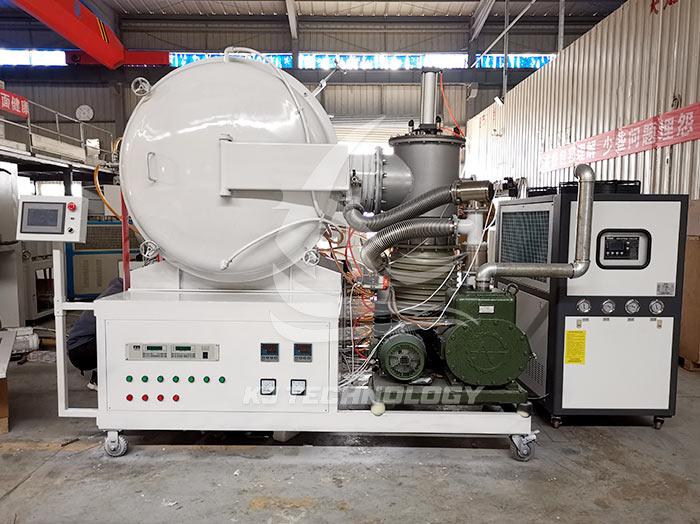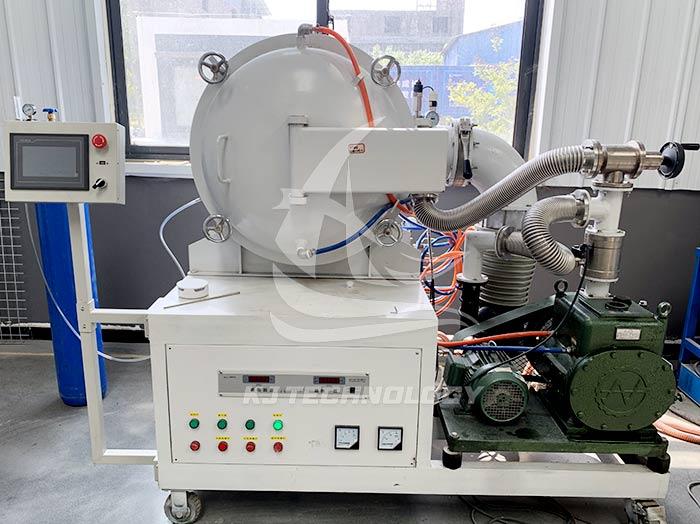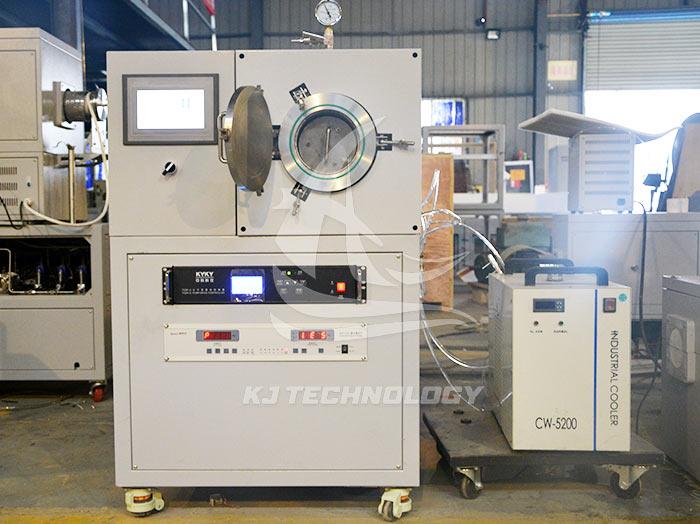Application process of vacuum gas quenching furnace
 11-10-2025 Author: KJ technology
11-10-2025 Author: KJ technology
The application processes of vacuum gas quenching furnaces mainly include vacuum quenching, vacuum tempering, vacuum brazing, vacuum sintering, etc. These processes rely on the vacuum environment to optimize material properties. The specific introduction is as follows:
Vacuum quenching
Process principle: Place the metal workpiece in a vacuum environment and heat it to a specific temperature. After the workpiece completes austenitization and other structural transformations, high-pressure inert gas (such as nitrogen, argon, or mixed gas) is filled into the furnace to achieve rapid cooling of the workpiece through high-speed airflow.
Technological advantages:
No oxidation, no decarburization: The vacuum environment effectively eliminates impurity gases such as oxygen and water vapor, avoiding oxidation and decarburization on the surface of the workpiece. After treatment, the surface of the workpiece is bright and clean, without the need for subsequent precision machining processes such as polishing.
Small deformation: By optimizing the airflow circulation and pressure gradient, all parts of the workpiece are uniformly cooled, especially for complex workpieces with thin walls and sharp corners. The cooling strategy of "low-pressure start-up+gradual pressure rise" can significantly reduce stress concentration, and the deformation is only one-third of that of salt bath quenching.
Excellent material properties: Vacuum degassing can remove tiny pores inside the workpiece, significantly improving the density and mechanical properties of the material, and enabling the workpiece to perform better in strength, toughness, and other indicators.
Controllable cooling speed: By adjusting the gas type, pressure, and flow rate, it can meet the processing needs of different materials and achieve ideal quenching effects.
Application Scenario:
Aerospace field: Processing titanium alloy components and high-temperature alloy parts to improve the high-temperature strength and fatigue life of materials.
Automotive industry: Processing precision gears, molds, etc. to improve the dimensional accuracy and wear resistance of parts.
Medical device field: Processing stainless steel precision parts to maintain surface smoothness and metallurgical integrity.
Vacuum tempering
Process principle: After the quenching process, the metal material is placed in a vacuum or controlled atmosphere environment for heat treatment. By precisely controlling the heating temperature and holding time, the internal stress of the material is eliminated and the microstructure is adjusted, thereby achieving the goal of reducing hardness and improving toughness.
Technological advantages:
Avoid oxidation: The vacuum environment effectively inhibits oxidation reactions, maintaining the surface smoothness and metallurgical integrity of the material.
Improve toughness: significantly reduce mold distortion, avoid quenching cracks, and improve surface hardness distribution uniformity.
Application Scenario:
Tool manufacturing: Improve the toughness and service life of cutting tools.
Precision mold manufacturing: As a supporting process for vacuum quenching, it reduces mold distortion and cracking, improves mold accuracy and stability.
vacuum brazing
Process principle: In a vacuum environment, the joint gap is filled by melting the brazing material to achieve workpiece connection. Vacuum environment can avoid defects such as oxidation and porosity during brazing process, and improve welding quality.
Technological advantages:
High welding quality: Vacuum environment eliminates impurity gases, reduces welding defects, and improves joint strength and sealing.
Wide applicability: Suitable for welding various metal materials, especially in situations where high welding quality is required.
Application Scenario:
Aerospace field: Welding high-temperature alloy components such as engine blades and turbine disks.
In the field of electronic appliances: welding precision electronic components to improve product reliability and stability.
Vacuum sintering
Process principle: In a vacuum environment, the powder material is heated to a certain temperature and kept at that temperature for a certain period of time, causing diffusion and rearrangement between the powder particles, forming a dense solid material.
Technological advantages:
Excellent material properties: Vacuum environment helps to remove oxides and other impurities on the surface of materials, reduce obstacles during sintering process, and improve the quality and performance of sintered products.
High sintering efficiency: The vacuum environment is conducive to heat transfer and uniform distribution, accelerating the sintering process and improving production efficiency.
Application Scenario:
In the field of powder metallurgy, high-performance materials such as metal ceramics and hard alloys are prepared.
In the field of additive manufacturing: processing 3D printed parts, optimizing organizational structure and performance.








